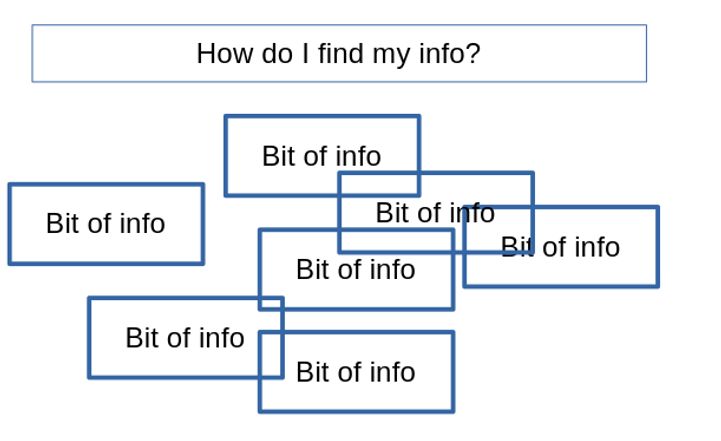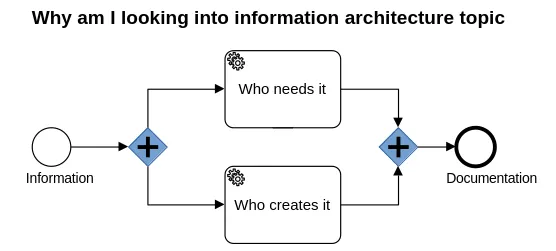
Notes on "A practical guide to information architecture"
I’ve read the (at this moment, free) book, “A practical guide to information architecture”, by Donna Spencer, and here are some notes about it.
These notes are mostly helpful to me, but I want to get into a habbit of publishing more of my notes (and thoughts in general) on this blog, so there goes.
Why is information architecture important?
We all communicate daily in all aspects of life. Having a clear common understanding of this information transfer reduces confusion and helps us have a shared understanding of the world.
Information architecture
- always many ways to organize information
- people have different needs w.r.t. information
- people have different ideas as to what goes together or not
- people have different levels of knowledge
Parts of good information architecture planning
- people, content and context
Deliverables in IA
- structure (or shape) of the “site” (information architecture)
- groups and sub-groups (navigation)
- metadata (metadata)

Lean communication
-
traditionally: documentation is the base, other forms of communication play support roles
-
“agile”: upside down; agile documents have barely sufficient detail and are intentionally created to convey the instability of the information they are communicating.
-
not an end to itself, but means to move the project forward
-
IA in agile is distributed and iterative
Who does IA
- roles vary wildly
- skills needed:
- empathy: in “their” shoes
- language: clarity. Note: GenAI can probably help, but need precise and consistent prompt, at least for style
- synthesis, strategy and detail: big-picture knowledge as well vs enough details for this current thing to work
- communication
Non-website IA
-
Found in: menus, data-heavy apps, classifying and mobile
-
classifying: should make grouping and collating data easier, not harder
-
what’s the goal of dealing with IA explicitly:
- “our docs suck”, “I can’t find info on anything”
- 5 whys of setting goals
- you can set up scenarios, personas, experience maps
communication methods include:
- user research report
- personas
- scenarios
- quotes from
- experience maps
- things made on-the-spot
On cathegories
- independent of the real world
- highly personalized
- fuzzy boundaries
- “other” cathegory is simple for a human mind, but very difficult to use in IA
Planning IA content
- Collating existing content is important
- but so is knowing what do we actually need
- value vs. cost
- accuracy, audience, length
On designing IA
-
IA patterns are important
-
Patterns:
- hierarchy: varied content
- database: consistent structure content
- hypertext: linked content
- linear: sequential
- hier+db: general content plus some specifics
- catalog: sub-type (or, near-type) of database, large sets of structured content
- hub and spoke: hierarchical content
- subsites: laaaaarge sites with independent sections
- focused entry points
- tagged: lots of content
Hierarchy:
-
it’s not as important for “everything in 3 clicks” -> much more important to make an easy decision
-
labels: consistent, clear, use DSL, expect changes
-
how to create IA: plan, communicate, test it